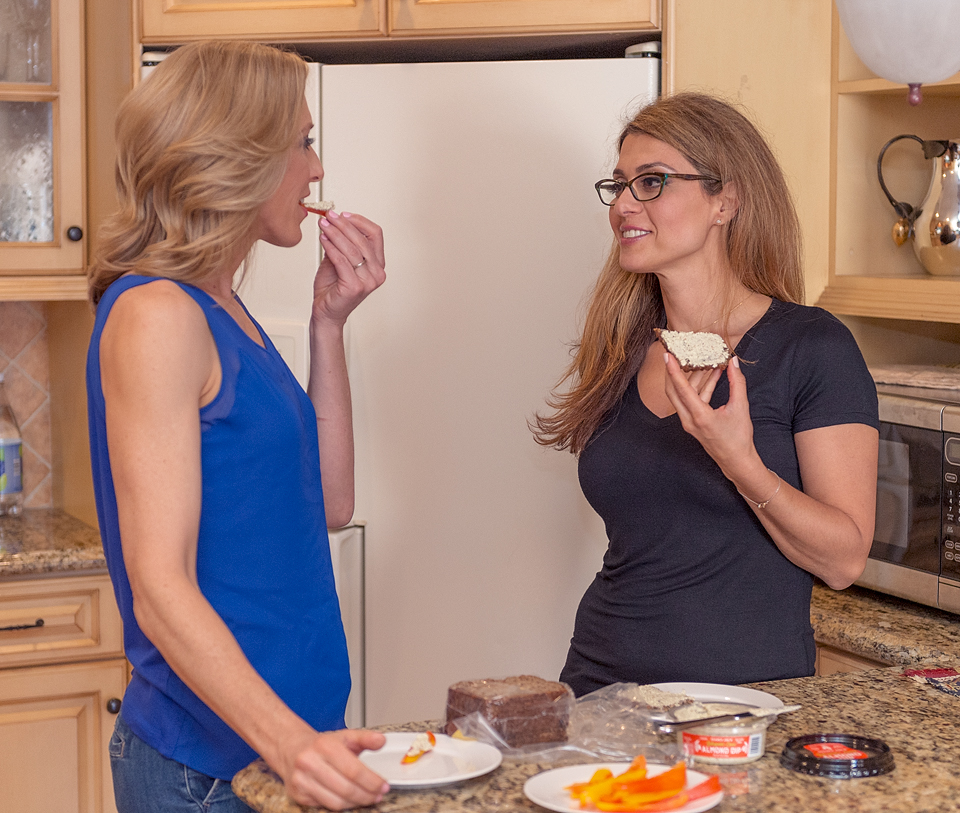Why we don’t focus on calories

We recently received the following question from one of our followers, and we thought it would be great to share our response with all our recipe readers! Here’s the question:
“I love the recipes you post and have made many of them! Thank you! I am curious to know why you don't list the calorie information along with your recipes.”
And here’s our response:
Thank you for reaching out to us. We love talking all things nutrition and educating our members & online community about why we don’t focus on calories.
Here at Healthy Eating at Trader Joe’s we’re all about teaching our members the best nutrition strategies for sustainable weight loss.
We’ve all heard that to lose weight you have to burn more calories than you consume, but here’s why that’s not really an effective strategy:
First, it’s very complicated to accurately calculate how many calories you burn daily.
You may see formulas or apps that calculate how many calories you burn per day. But guess what – that’s only a very general ballpark figure.
The only way to accurately determine your daily calorie burn is to go to a research lab and spend 24 hours in a special chamber that measures your energy expenditure.
And even then, that’s just a snapshot of a single day. The number of calories you burn is different day to day depending on many factors, including your activity level, how hot or cold it is, what you eat, your age & your body composition.
And second, it’s also almost impossible to get a precise count of how many calories you consume daily!
When we look at a food label, or look up calories online, we all think what’s listed is absolute fact. But those numbers are NOT precise. In fact, legally, they can be off by 20%!
How can this be?
- Just like people, the plants and animals that provide our food are unique organisms. So, the calories are estimates based on the average number of calories in a sample (not the actual food you’re eating).
- The number of calories that are stored in food are not the same number of calories that your body will absorb. The amount of fiber, how the food is cooked & processed, and even your own gut bacteria can affect how many calories you absorb.
But even more important is that calories have nothing to do with the nutrients your body needs to be strong & healthy.
If you only focus on calories, you might think a large banana that’s about 125 calories is similar to a 150 calorie twinkie.
But, the banana provides you with vitamins & minerals, plus fiber that will fill you up. While the twinkie, with its sugar and artificial ingredients, will give you an energy crash and make you feel hungry much sooner.
Sustainable weight loss requires that you be strategic about which habits you focus on.
And so, for all these reasons, we teach our members that meticulously counting their calories is not the best use of their time or energy.
- With all of that said, when designing our meal plans all our recipes typically fall within a healthy range for women who are interested in weight loss. Here’s the range for our recipes depending on the type of meal:
- Breakfast: 250-300
- Lunch 350-400
- Dinner 350-400
- Snacks 200-250

OK, so if we don’t focus on calories, what do we focus on?
We look at the whole picture when it comes to nutrition.
First, we teach our members & followers to focus on the quality of their nutrition by including whole foods in all their meals & snacks.
Having adequate vegetables, fruit, whole grains, nuts, seeds, and lean protein in our diet ensures that we get the macronutrients (carbohydrates, protein & fat) and micronutrients (vitamins, minerals, antioxidants & fiber) that we need daily.
And when our bodies have all the nutrients we need to function properly, our metabolism is strengthened and weight loss is so much easier.
- Here’s the macronutrient breakdown for our daily menus:
- Carbohydrates 45-65%
- Protein 15-35%
- Fat 20-35%
- In addition:
- Sodium is at or below 2000 mg per day, well below the recommended upper limit of 2300 mg per day.
- Fiber is at or above 25 grams per day, the recommended daily minimum for women.
And second, we teach our members to focus on the feelings of hunger & fullness.
People who focus on their satiety levels can be just as successful at losing weight as those who count calories.
The best way we’ve found to get in tune with our satiety levels is to focus on eating healthful food just until we’re about 80% full. That means we chew well, eat slowly, and stop eating when we’re comfortably full.
Not only will you learn the perfect portion size for your body, but you’ll be increasing your enjoyment of the flavors, aromas & textures from your healthful food.
In conclusion, we hope we’ve helped you understand why our recipes don't focus on calories.
Calorie counting is just not as effective as focusing on whole foods & individualized portions when it comes to reaching and maintaining a healthy weight.
We’ve seen from working with thousands of women that when you focus on effective weight loss strategies like the ones we’ve shared, you’ll get results that last. And here at Healthy Eating at Trader Joe’s, that’s what we’re here to help you with!


